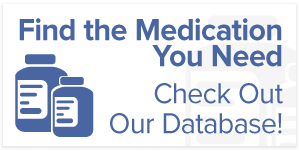Atopic Eczema and Treatment Options
Did you know that atopic dermatitis (eczema) affects 30 percent of US citizens, including adolescents and children? It is a skin condition that causes itchy patches on your skin. This article will teach you everything you need to know about atopic dermatitis (eczema). So, without further delay, let’s begin.
What Is Atopic Eczema?
Atopic eczema is a chronic condition that causes dry, scaly, and itchy skin. Unlike other medical conditions, atopic dermatitis (eczema) might only affect your childhood or can come and go as you grow old. In simpler words, atopic eczema isn’t something you have to deal with daily, but it can be triggered by lifestyle or environmental changes.
In people with light-colored skin, atopic eczema looks like red rashes. Atopic eczema may develop grey, purple, or brown-colored rashes in people with a dark complexion. Atopic dermatitis (eczema) develops on the joints or any other area where your skin bends, for example, legs, eyelids, lips, arms, toes, feet, fingers, and hands. Some common symptoms of atopic dermatitis (eczema) include:
- Cracked skin.
- Grey, purple, brown, and red rashes.
- Dry skin.
- Inflammation and swelling.
- Severe itching.
- Small, fluid-filled crusting or bumps on the skin.
What Are My Treatment Options?
While there is currently no one hundred percent cure for atopic dermatitis (eczema), there are several medications, treatments, and therapies that can help you in dealing with atopic eczema flare-ups and symptoms. Some of them are listed below:
1. Medications
Several medications can help you in controlling itching and repair atopic eczema-damaged skin. Over-the-counter treatment options for atopic dermatitis (eczema) include:
- Ointments, lotions, and moisturizing creams.
- Oral antihistamines diphenhydramine (Benadryl)
- Corticosteroid tablets and corticosteroid creams
- Antibiotics
- Injected biological drugs
- Topical calcineurin inhibitors
2. Light Therapy
Also known as phototherapy, light therapy works wonders for people with severe flare-ups. During light therapy, the healthcare provider will expose atopic eczema-affected skin to a controlled amount of UV rays (ultraviolet). However, note that using light therapy in the long term can lead to cancer, premature skin aging, and changing the pigmentation of your skin.
3. Wet-Wrap Therapy (WWT)
Wet-Wrap Therapy helps in controlling the atopic eczema symptoms by increasing the moisture level in your skin. In case of a sudden severe flare-up, a medical professional will use this intensive treatment to control the condition. The professional will start by applying steroid creams, followed by wrapping your skin with wet bandages.
Note that the right treatment for atopic dermatitis (eczema) depends on your symptoms, age, medical history, and other factors. Therefore, always reach out to a healthcare provider before getting any treatment.
We’ve Got Full-Service Prescription Assistance Programs for Everyone!
Whether you deal with it every day or get it a few times a year, atopic dermatitis (eczema) is a very frustrating skin condition. Therefore, it is your responsibility to ensure that you do everything to control it. Taking medication is the most effective way to minimize atopic eczema flare-ups.Sign up at Advocate My Meds for their financial assistance for prescriptions program and get medications at little to no cost.







